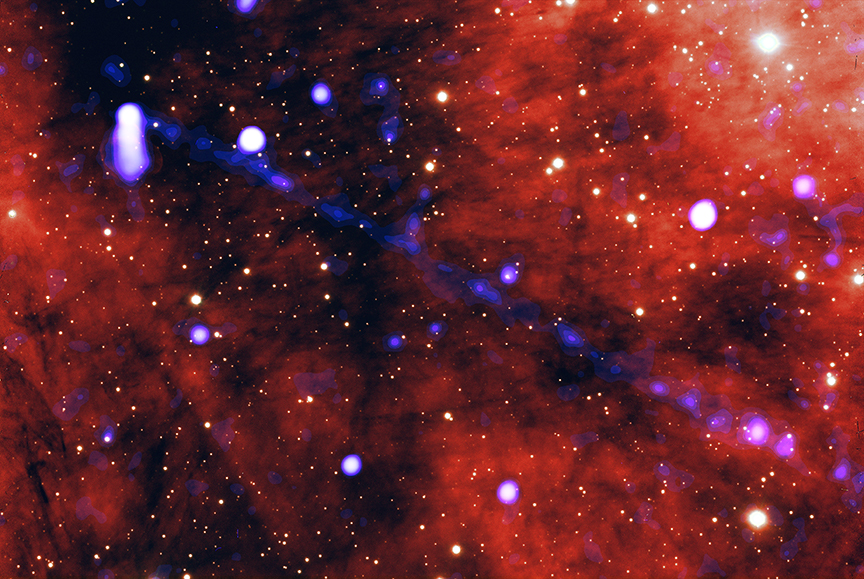
PSR J2030+4415 isn't just any pulsar.
That much is certain, thanks to the absolute colossus of a beam that astronomers have discovered erupting from the pulsar's heart. (A pulsar is a type of neutron star — the ultradense remnants of an exploded star — that emit two beams of light as they spin, like a lighthouse.) And in this case, that beam is packed with matter and antimatter and spans 40 trillion miles (64 trillion kilometers) from end to end, long enough to eclipse the entire solar system.
"It's amazing that a pulsar that's only 10 miles across can create a structure so big that we can see it from thousands of light-years away," Martijn de Vries, a postdoctoral astronomer at Stanford University, said in a statement published by NASA's Chandra X-ray Observatory, which gathered observations used in the research.
Related: 50 years ago Jocelyn Bell discovered pulsars and changed our view of the universe
Even at PSR J2030+4415's distance, 1,600 light-years from Earth, the beam would span half the diameter of the full moon in the sky. But astronomers aren't just interested in the beam for its size. The massive structure could also enlighten a particle physics mystery.
Astronomers first glimpsed the beam with Chandra in 2020, but they couldn't see its full expanse. But de Vries and his colleagues recently used Chandra to do just that.
And the new observations show that the massive beam consists of high-energy charged particles: electrons and positrons, which are the antimatter twins of electrons. (Antimatter is pretty similar to matter, but with its charges reversed, and antimatter is rarer than matter.) Pulsars produce such particles all the time, but they typically stay within the confines of the pulsar's magnetic field. Instead, PSR J2030+4415 is leaking them out into deep space, forming the massive beam.
Get the Space.com Newsletter
Breaking space news, the latest updates on rocket launches, skywatching events and more!
The beam's discoverers think the leak is due to the pulsar's bow shock — the part of the magnetic field that normally foreshadows the pulsar as it moves through space — somehow stalling. The pulsar caught up, effectively crashing into the magnetic field of interstellar space. When the two connected, high-energy electrons and positrons began spraying out into space.
On Earth, scientists detect positrons all the time but can't fully explain where these particles come from. If they formed in the early universe, the positrons now on Earth would likely have collided with normal matter, annihilating both in the process. Instead, positron fountains like PSR J2030+4415's could be the source of the positrons scientists see today.
The research is described in a paper posted to the preprint server arXiv.org on Feb. 7 that has been accepted for publication in The Astrophysical Journal.
Follow us on Twitter @Spacedotcom and on Facebook.
Join our Space Forums to keep talking space on the latest missions, night sky and more! And if you have a news tip, correction or comment, let us know at: community@space.com.

Rahul Rao is a graduate of New York University's SHERP and a freelance science writer, regularly covering physics, space, and infrastructure. His work has appeared in Gizmodo, Popular Science, Inverse, IEEE Spectrum, and Continuum. He enjoys riding trains for fun, and he has seen every surviving episode of Doctor Who. He holds a masters degree in science writing from New York University's Science, Health and Environmental Reporting Program (SHERP) and earned a bachelors degree from Vanderbilt University, where he studied English and physics.









